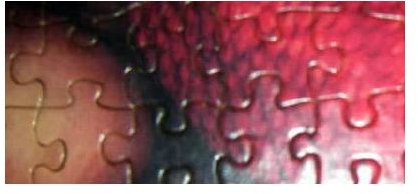Genetic Testing for Autism
Introduction
Conclusive findings continue to elude researchers as they strive to pinpoint the causes and potential cures for autism. Autism organizations frequently use puzzles pieces as logos for a good reason – they represent the difficulty of finding the right pieces of information, in the right order, to construct the whole picture. So how effective is genetic testing for autism?
Autism is a puzzling disorder.
Screening with Genetic Tests
The Children’s Hospital, Boston, shared the recommendation from the American Academy of Pediatrics that all children routinely participate in screening for ASD twice, at 18 months and again at 24 months of age, even if they have not previously exhibited any signs or symptoms of developmental delays or disorders. [1] The directive is the result of the increasing incidence of autism, currently 1 in 91 American children [2], and the urgency for early detection and aggressive treatment. [3]
The first level of screening covers the basic guidelines for developmental milestones achieved by normally developing children. If parents and professionals have concerns about children who show deficiencies in the first level of screening, they proceed to the second level of screening. This second level involves more in-depth and formal evaluation, diagnosis, and procedures, including genetic testing with a medical geneticist who can ascertain if specific genetic traits are present to indicate a diagnosis of autism. [4]
Types and Results of Genetic Testing
In March 2010, WebMD announced a study demonstrating that a new type of genetic test is superior to two older tests. Prior to the new test, known as “chromosomal microarray analysis” (CMA), two other tests had routinely been part of a child’s health screening. [5] These other two tests, operating at the microscopic level, are G-banded karyotype testing and fragile X testing; findings about the effectiveness of these two tests after compiling results from over 800 patients were:
- G-banded karyotype testing: standard genetic test yielded abnormal findings in about 2 percent of patients.
- Fragile X testing: found abnormal results in about .5 percent of patients.
The new test, CMA, operates at the molecular level. Its results were significantly higher than those from either of the other two tests; finding abnormalities in about 18 percent of the patients. Out of the 18 percent, about 7 percent revealed “possible or known genetic disorders.” [6] The doctors and researchers involved in the compilation and review of statistics agreed that the new CMA test should be a required part of every screening, due to its higher rate of detecting abnormalities related to genetic disorders. Further, autism expert and director of the MIND Institute at University of California, Davis, Randi Hagerman, MD, stated that for anyone with autism, the CMA test “is the No. 1 test to yield an abnormal result.” [7]
Benefits
The primary benefit of genetic testing, particularly the CMA test, is its ability to detect genetic disorders related to autism earlier than through other types of screening. Earlier detection yields earlier intervention and treatment. This in turn can potentially improve the lives of autistic children and their families. Another benefit of genetic testing is assisting parents with determining whether they want to take the risk of having additional children who may also have autism. [8]
Limitations
Genetic testing has its limitations. Bai-Lin Wu, PhD, the medical director of the genetics diagnostic laboratory at Children’s Hospital, Boston, stated that genetics only account for about 15 percent of autism cases; of that number, the CMA tests only verify about 7 percent. [9]Other limitations of genetic testing include the fact that the testing is cost-prohibitive to families, typically over $1,000, and insurance doesn’t cover it. In addition, the CMA test is not conclusive as a specific test for autism alone and requires more research studies to confirm its relevance and reliability for autism diagnoses.[10]
Autism Genome Project (AGP)
Autism researchers have expressed hope and enthusiasm about the Autism Genome Project (AGP), co-funded by Autism Speaks, touted as the “world’s largest autism science and advocacy organization.” [11] While earlier studies uncovered genetic mutations and revealed their influence as potential causal factors, the June 2010 announcement from Autism Speaks revealed new genetic discoveries during the second phase of research. [12]
This is a description of the composition of the AGP’s consortium and research subjects, from the Autism Speaks site [13]:
- AGP is “a first-of-its-kind… international autism genetics research consortium co-funded by Autism Speaks, the Medical Research Council, Canadian Institutes of Health Research, Health Research Board (Ireland), Genome Canada, the Hilibrand Foundation and Autistica.”
- Founded in 2002, AGP involves: “120 scientists from more than 60 institutions representing 11 countries.”
- Findings resulted from “high-density genotyping data collected from 1,000 individuals with autism spectrum disorder (ASD) and 1,300 without ASD.”
This is a summary of the findings from Phase 2 of the research, from the Autism Speaks site [14]:
- Higher incidence of “submicroscopic insertions and deletions called copy number variants (CNV) occurred in the genome” (i.e., genetic composition) of autistic individuals than in control group individuals.
- Scientific terms for “new autism susceptibility genes are SHANK2, SYNGAP1, DLGAP2 and the X-linked DDX53–PTCHD1 locus.” Locations and bodily functions for these genes include “synapse-related pathways, cellular proliferation, projection and motility, and intracellular signaling.”
This is the conclusion of researchers regarding the findings, from the Autism Speaks site [15]:
- Findings support the scientific community’s “emerging consensus” that “autism is caused in part by many ‘rare variants’ or genetic changes found in less than one percent of the population.”
- Findings demonstrate various developmental disabilities share some genetic risk factors, based on the “overlap between autism susceptibility genes and genes previously implicated in intellectual disabilities…”
- Findings “point to new avenues of scientific investigation, as well as potential targets for the development of novel treatments.”
Conclusion
The increasing incidence of autism has encouraged ongoing research into the causes. Genetic testing for autism has demonstrated effectiveness. Autism organizations use puzzle pieces as logos to highlight the difficulty of finding all the “pieces” to shed light on the whole picture. Genetic testing may provide additional crucial pieces of the puzzle.
As Dr. Andy Shih, Autism Speaks’ vice president for scientific affairs stated, “Piece by piece, we are discovering genetic mutations that can cause autism. These findings will provide answers for families about what contributed to their autism … [and]help us understand the underlying biology of autism, which can lead to the development of novel treatments.” [16]

References
[1][3][4]Children’s Hospital Boston. Autism. Retrieved from https://www.childrenshospital.org/az/Site613/mainpageS613P0.html
[5][6][7]WebMD. New Genetic Autism Test Beats Older Tests. Retrieved from https://www.webmd.com/brain/autism/news/20100315/new-genetic-autism-test-beats-older-tests
[2]Children’s Hospital Boston Blog. Is autism really on the rise? Retrieved from https://childrenshospitalblog.org/is-autism-really-on-the-rise/
[8][9][10]WebMD. Limitations of Autism Testing. https://www.webmd.com/brain/autism/news/20100315/new-genetic-autism-test-beats-older-tests?page=2
[11][12][13][14][15][16]Autism Speaks. Autism Genome Project (AGP). Retrieved from https://www.autismspeaks.org/press/autism_genome_project_nature.php
Resource
Autism Speaks Blog. Geri Dawson Reflects on AGP Phase 2 Results. Retrieved from https://blog.autismspeaks.org/2010/06/10/geri-dawson-agp-results/
[Image permissions: Photos taken by this article’s author].
